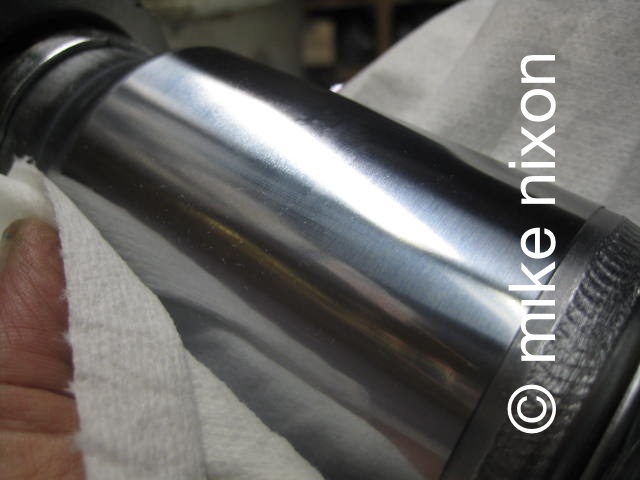
|
This is the critical point of this shock. If there is anything wrong here, you don't want to put a new seal on it. This one is perfect. Smooth as a baby's bottom. You don't have to disassemble the shock this far to see this, just peel the dust boot back and clean it up in there and get a look-see.
|
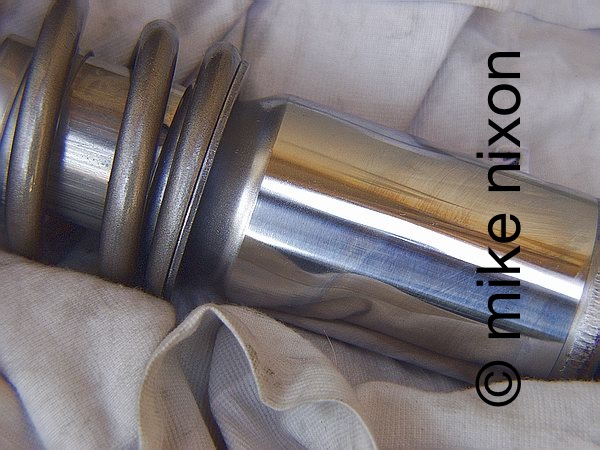
|
Here's another nice one. I don't see all that many this good. Usually it's a compromise.
|
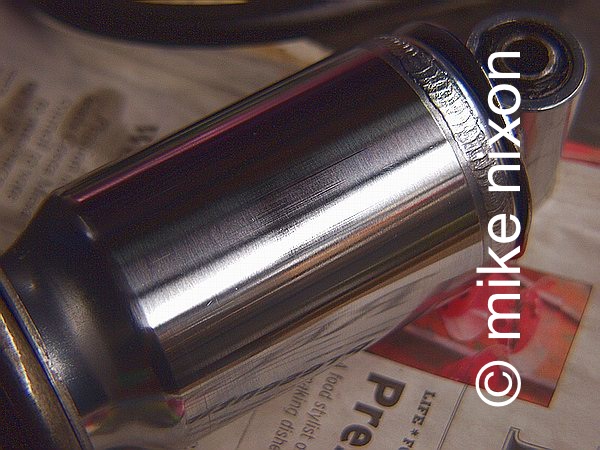
|
This is the most common thing to see. The main shaft is very lightly scored. Not too bad. This is the result of over-pressurizing the shock, which many people do because they are trying to make up for a defect in the unit.
|
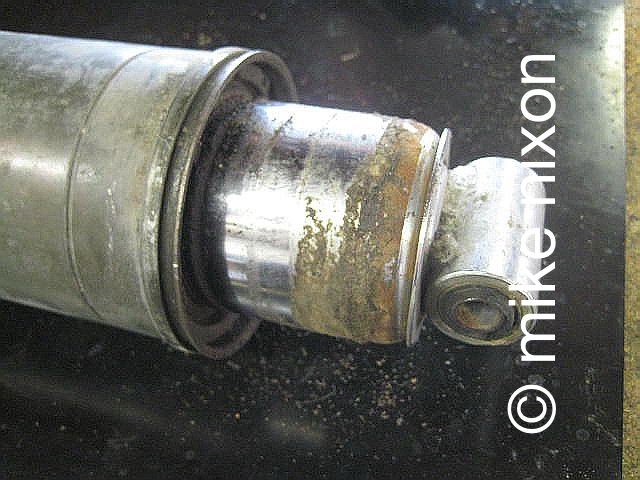
|
Here is a shock that is no good. The rust extends into the seal riding area.
|
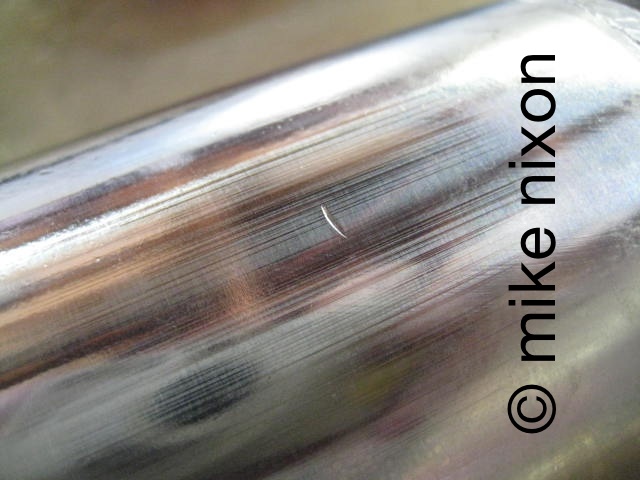
|
Obviously, this shock has a problem. Probably got dented during removal or during a previous reinstallation. The seal will not last on this one, so don't even try.
|
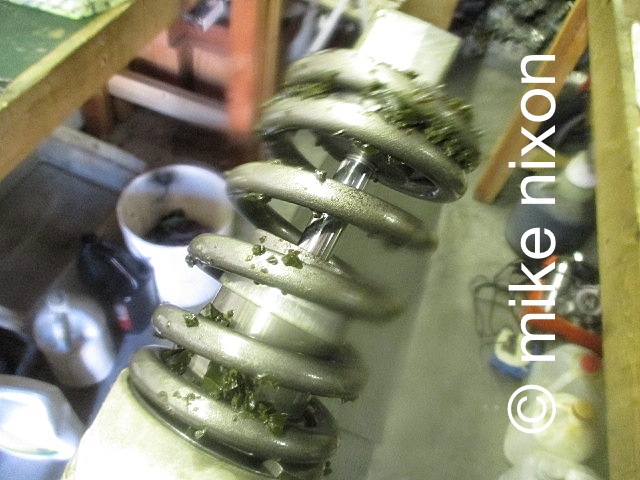
|
Before I disassemble the shock, and after I have removed the seal and the hydraulic fluid, I shake it and listen for pieces flying around. This shock is farther than usual disassembled so you can see what makes the noise. It's the compression bump stopper that has disintegrated and fouled up the unit. I have replaced several bump stoppers on shocks, but I feel that you really can't get all the particles out due to the twin-tube design of the shock, and those pieces can come back and haunt you, so I don't like to guarantee a shock whose bump stopper has deteriorated like this. Messy!
|
|
Pix are of actual customer's shocks
|

 ®
®

 ®
®





